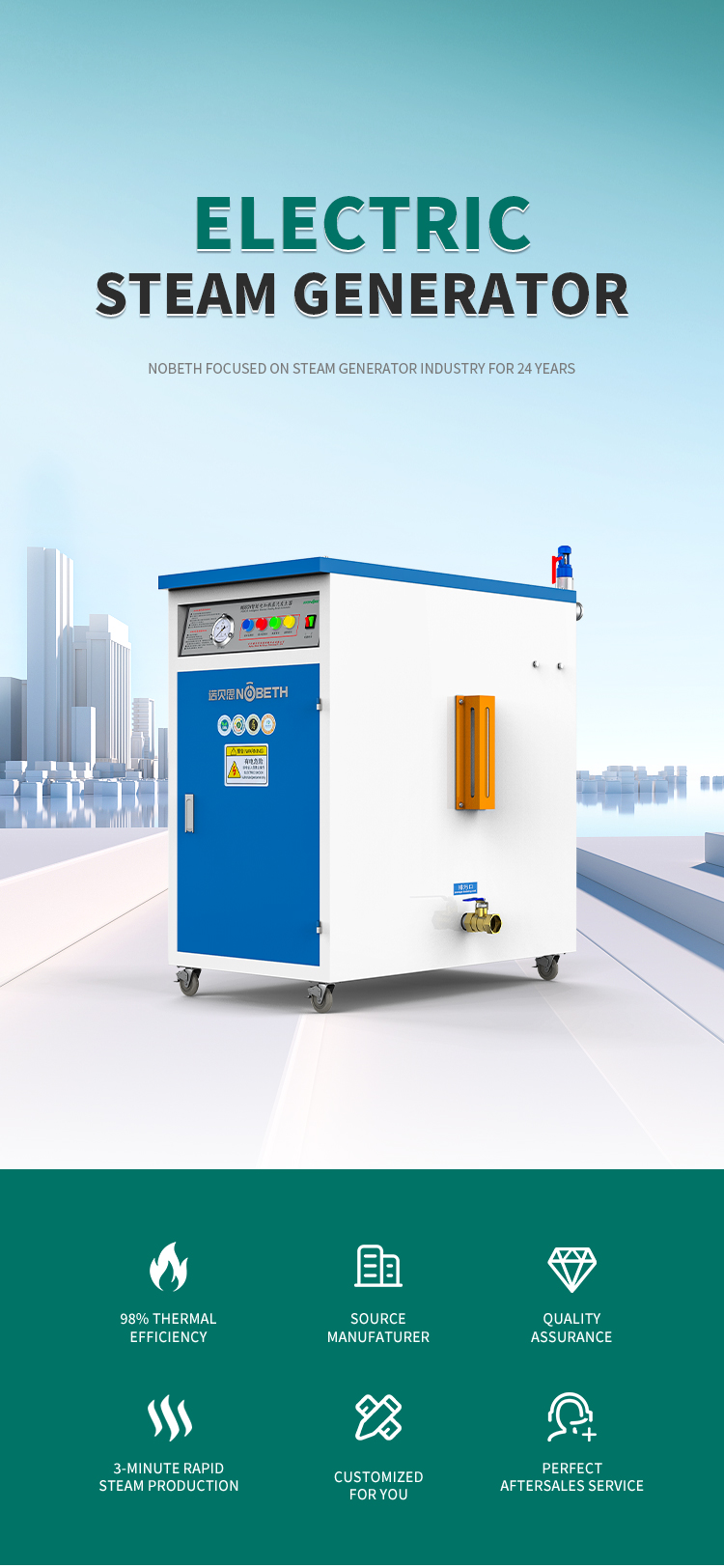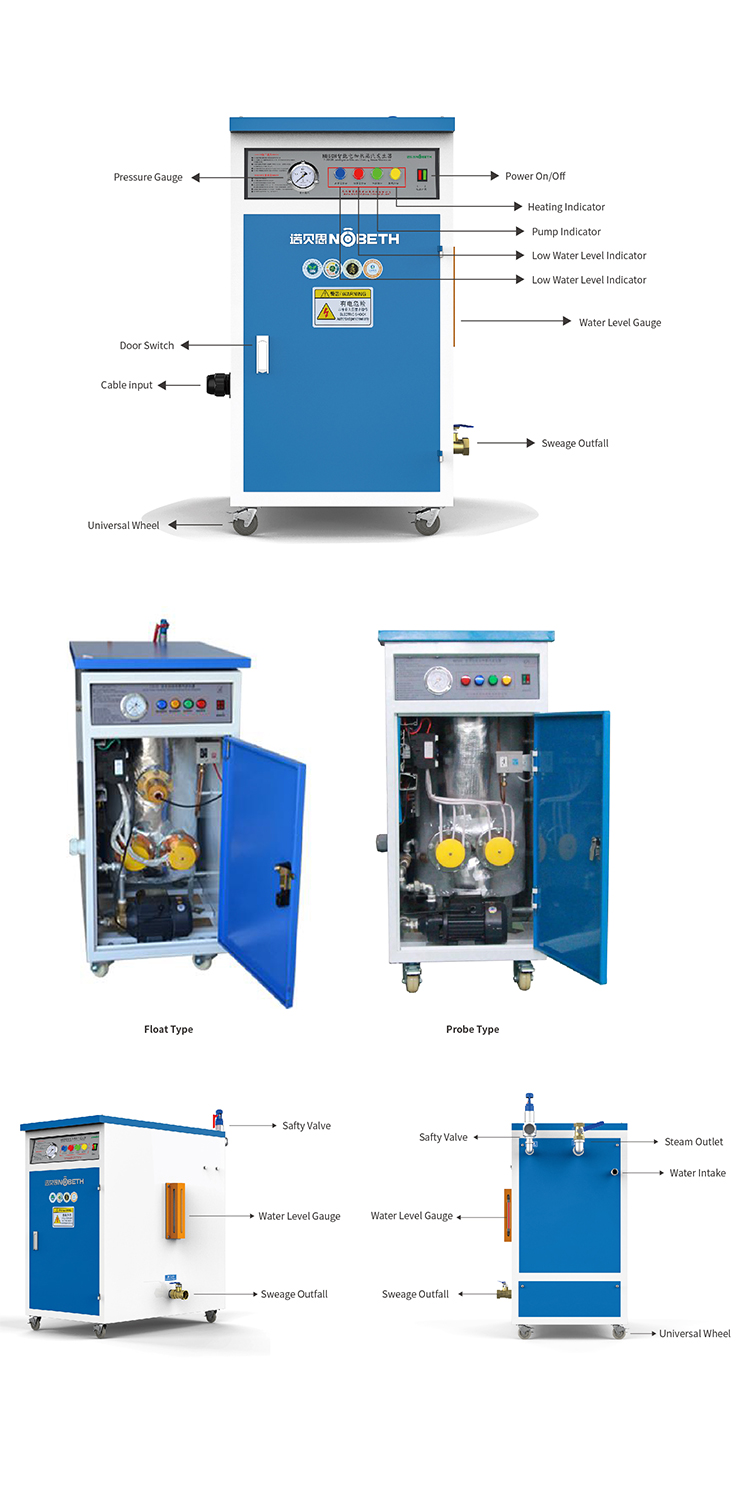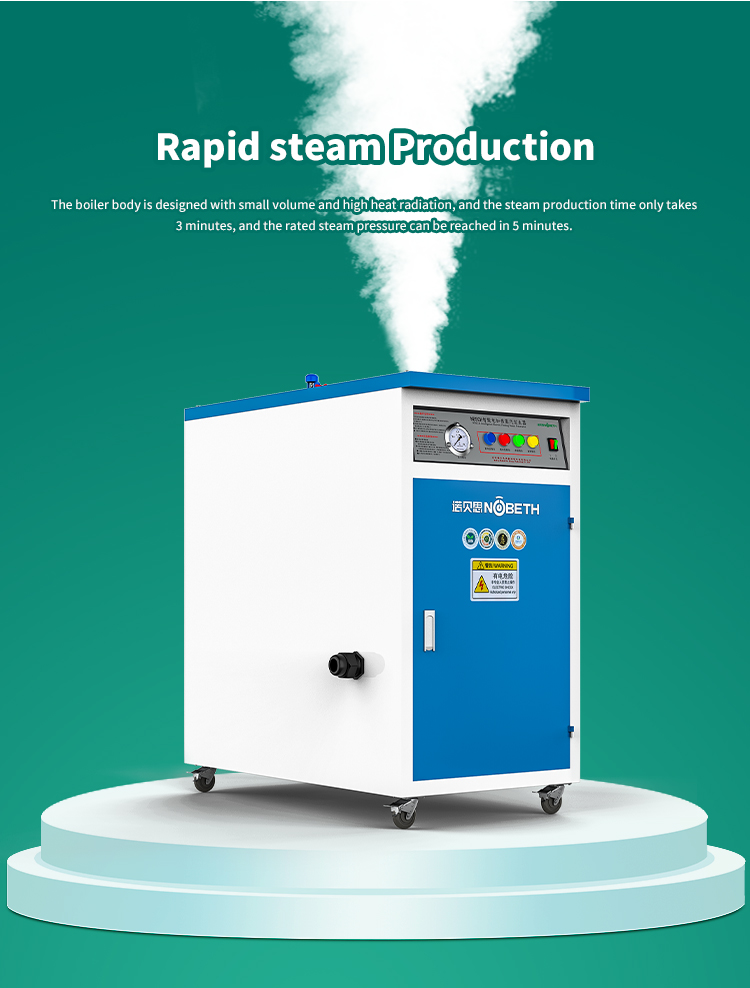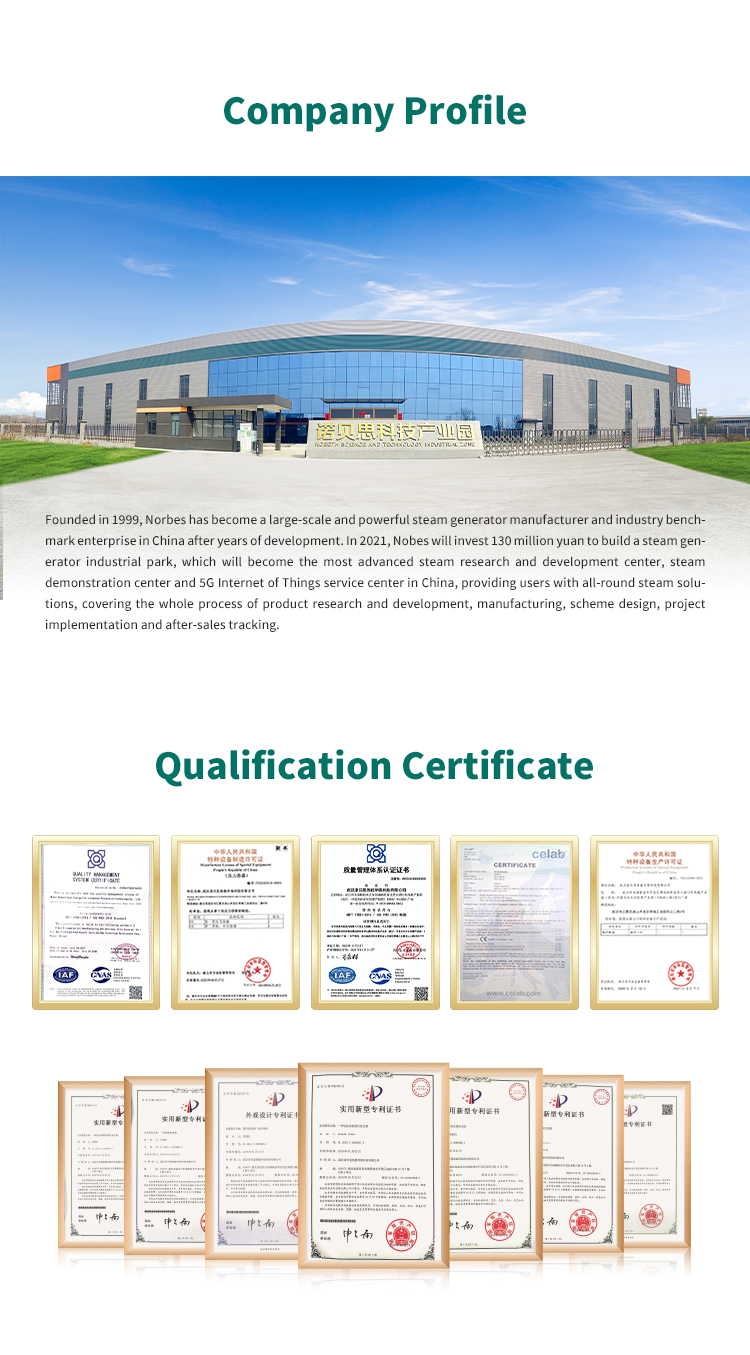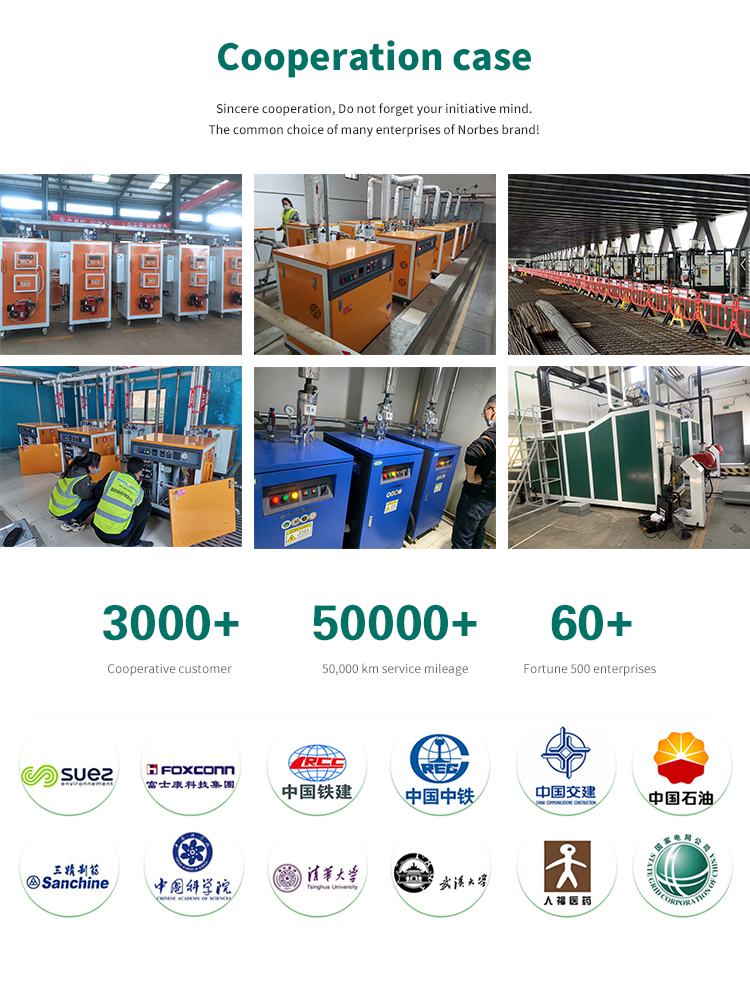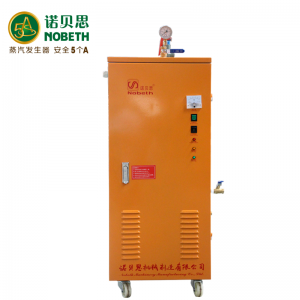
48kw electric steam heat generator
When the steam generator forms steam and raises the temperature and pressure, there is usually a temperature difference between the bubble along the thickness direction and between the upper and lower walls. When the temperature of the inner wall is higher than that of the outer wall and the temperature of the upper wall is higher than that of the bottom, in order to avoid excessive thermal stress, the boiler must increase the pressure slowly.
When the steam generator is ignited to increase the pressure, the steam parameters, water level and working conditions of the boiler components are constantly changing. Therefore, in order to effectively avoid abnormal problems and other unsafe accidents, it is necessary to arrange experienced staff to strictly monitor the changes of various instrument prompts.
According to the adjustment and control pressure, temperature, water level and some process parameters are within a certain allowable range, at the same time, the stability and safety factor of various instruments, valves and other components must be evaluated, how to fully ensure the safe and stable operation of the steam generator.
The higher the pressure of the steam generator, the higher the energy consumption, and the pressure on the corresponding steam-consuming equipment, its piping system and valves will gradually increase, which will put forward requirements for the protection and maintenance of the steam generator. As the proportion increases, the proportion of heat dissipation and loss caused by steam during formation and transportation will also increase.
The salt contained in the high-pressure steam will also increase with the increase of the pressure. These salts will form structural phenomena in heated areas such as water-cooled wall pipes, flues, and drums, causing problems such as overheating, foaming, and blockage. Cause safety problems such as pipeline explosion.
Products categories
-

E-mail
-

Phone
-

WhatsApp
-

Top


